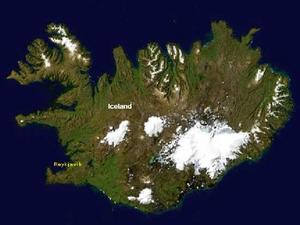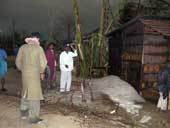A warmer world could be a more explosive one. Global warming is having a much more profound effect than just melting ice caps - it is melting magma too.
Vatnajökull is the largest ice cap in Iceland, and is disappearing at a rate of 5 cubic kilometres per year.
Carolina Pagli of the University of Leeds, UK, and Freysteinn Sigmundsson of the University of Iceland have calculated the effects of the melting on the crust and magma underneath.

|
| ©NASA
|
| Vatnajökull in the south-east is the largest ice cap in Iceland and conceals several volcanoes
|
They say that, as the ice disappears, it relieves the pressure exerted on the rocks deep under the ice sheet, increasing the rate at which it melts into magma. An average of 1.4 cubic kilometres has been produced every century since 1890, a 10% increase on the background rate.
Frequent eruptionsIn Iceland there are several active volcanoes under the ice. The last big eruption was in 1996 at Gjàlp, and before then in 1938 - a gap of 58 years. But Pagli and Sigmundsson say that the extra magma produced as the ice cap melts could supply enough magma for similar eruptions to take place every 30 years on average.

